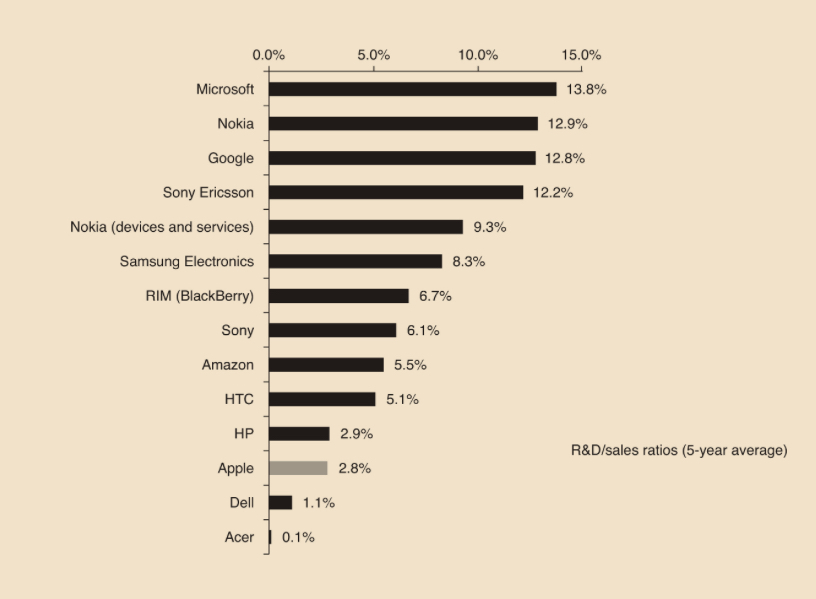Literature/202311281148 apple is riding the innovation wave fueled by the state
- Source: [[@mazzucato2018The entrepreneurial state: debunking public vs. private sector myths]]
- Tags: #entrepreneurial-state #apple #innovation
The book pin points Apple (the most valuable company in the world) as an example of how innovation is fueled by the state, even if we only perceive the final products as the real champions, sometimes embodied in a single person, like Steve Jobs.
However, I find the arguments in this chapter increasingly weak. On the one hand it blames Apple for not acknowledging that it was state-sponsored research that enabled their products to become what they are. From the Internet, to touch screens, to cellphone tech, to the GPS, and AI algorithms.
I think that the authors is throwing too many concepts in the same bag for the sake of a grandiloquent argument, and a shakedown on an extremely valuable company.
Moreover, picking up a company with a large fan base is a cheap way of creating controversy and gaining the social media spotlight.
What the chapter points out is that Apple invests less in R&D (normalized by sales volume) compared to companies like Microsoft, Nokia, Sony Ericcson, or even RIM (Blackberry).

However, the author choses this metric to justify the view of Apple being a freerider on state-sponsored innovations.
I agree, without those projects, Apple wouldn't have been able to build what it did. However, there is zero discussion about how come Apple makes so much profit investing less in R&D than their competitors. It may mean that the true focus of Apple is understanding their customers, and focusing on building solutions for them better than anyone else.
After all, the GPS, the Internet, the Chip making industry, are available to all companies. They are "public goods".
I find that this chapter lacks from analysis depth.
State-financed innovation is the basis for value generation. I would have picked a different analysis road, focusing on enablement by the state, and not lashing on a company that, in principle, has follow the innovation cycle to the letter, as was explained in the previous chapter (202311281141 Companies will invest more on applied research).
